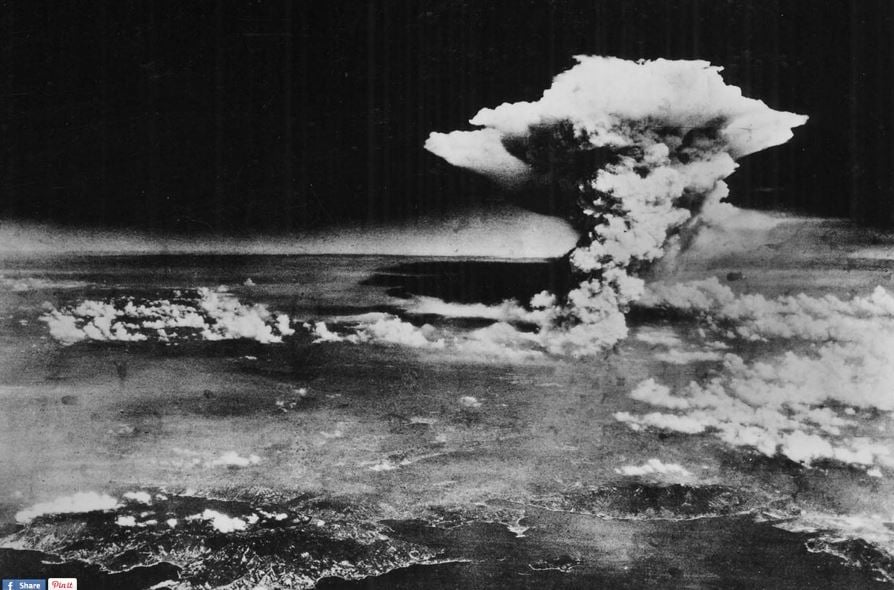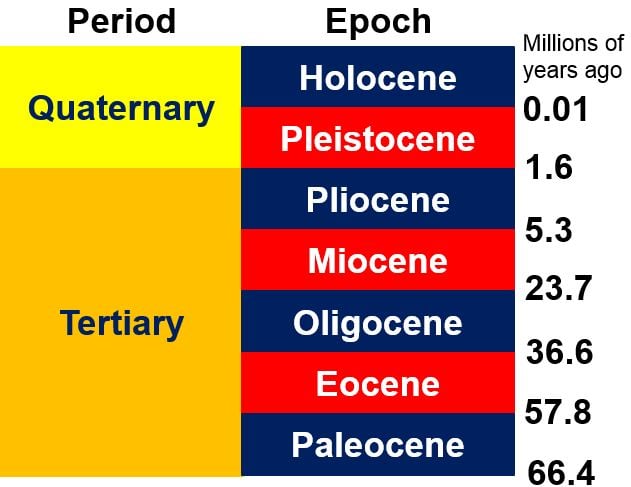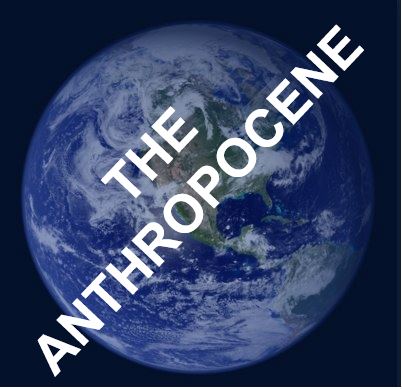The Anthropocene – the period during which human activity has been the main influence on Earth’s geology, environment and climate – is here, says an international group of geoscientists, including researchers from the Universities of Leicester and Cambridge in England, and the British Geological Survey.
In an article published in the academic journal Science, researchers from the UK, USA, France, Poland, Spain, Australia, Austria, Norway, China, Switzerland, Kenya and Canada say that the evidence for a new geological epoch which marks the impact of human activity on our planet is now ‘overwhelming’.
According to Oxford Dictionaries, Anthropocene has the following meaning:
“Relating to or denoting the current geological age, viewed as the period during which human activity has been the dominant influence on climate and the environment.”
Put simply, the Anthropocene is when humans started influencing the geology of our world.
 In this sediment core from west Greenland, glacier retreat due to climate warming has resulted in an abrupt stratigraphic transition from proglacial sediments to non-glacial organic matter, effectively demarcating the onset of the Anthropocene. (Image: sciencemag.org. Credit: J. P. Briner)
In this sediment core from west Greenland, glacier retreat due to climate warming has resulted in an abrupt stratigraphic transition from proglacial sediments to non-glacial organic matter, effectively demarcating the onset of the Anthropocene. (Image: sciencemag.org. Credit: J. P. Briner)
Geologists and other scientists divide the Earth’s history into epochs, periods and other time units bounded by geological or biological signals, such as those left in the rock record by the mass extinctions that ended the Cretaceous and Permian eras, and the end of the last ice age that spurred the current Holocene epoch.
The Anthropocene believed to have started mid-20th century
The Anthropocene, which many geoscientists say started in the middle of the 20th Century, is marked by the spread of materials such as fly ash, plastic, concrete, aluminium, as well as the fallout from nuclear testing across the planet, which have coincided with the increased greenhouse gas emissions and unprecedented trans-global species invasions.
Extinction rates since the mid-20th century have been occurring at a considerably faster rate compared to what was observed since the sixteenth century.
The scientists, who are studying whether human activity has really been driving the Earth into a new geological epoch (the Antrhopocene), ask this question: “To what extent are human actions recorded as measurable signals in geological strata, and is the Anthropocene world markedly different from the stable Holocene Epoch of the last 11,700 years that allowed human civilization to develop?”
From The Holocene to The Anthropocene
During the Holocene Epoch, human societies advanced by gradually shifting from a hunter-gatherer to farming lifestyle to increase food production. We also built urban settlements and became skilled at developing the water, mineral and energy resources of the Earth.
However, the proposed Anthropocene Epoch is marked as a period of accelerated environmental change driven by the impact of a human population explosion and greater consumption during the ‘Great Acceleration’ of the mid-twentieth century.
 The atomic bomb that fell on Hiroshima, Japan – August 6, 1945. Did this mark the beginning of the Anthropocene? Last year, an international group of scientists recommended that the fateful Trinity nuclear test on July 16, 1945, be considered the dawn of a new geological age. (Image: historyguy.com)
The atomic bomb that fell on Hiroshima, Japan – August 6, 1945. Did this mark the beginning of the Anthropocene? Last year, an international group of scientists recommended that the fateful Trinity nuclear test on July 16, 1945, be considered the dawn of a new geological age. (Image: historyguy.com)
Co-author Dr. Colin Waters, a geologist at the British Geological Survey said:
“Humans have long affected the environment, but recently there has been a rapid global spread of novel materials including aluminium, concrete and plastics, which are leaving their mark in sediments.”
“Fossil-fuel combustion has dispersed fly ash particles worldwide, pretty well coincident with the peak distribution of the ‘bomb spike’ of radionuclides generated by atmospheric testing of nuclear weapons.”
Working group Chair and co-author, Jan Zalasiewicz, Professor of Palaeobiology at the University of Leicester, commented:
“All of this shows that there is an underlying reality to the Anthropocene concept.”
 Periods are divided into Epochs. We are currently in the Holocene Epoch, which began about 11,700 years ago. Many scientists want a new Epoch, called ‘The Anthropocene’, which they suggest started in the middle of the 20th century.
Periods are divided into Epochs. We are currently in the Holocene Epoch, which began about 11,700 years ago. Many scientists want a new Epoch, called ‘The Anthropocene’, which they suggest started in the middle of the 20th century.
The authors show that humans have changed our planet systems sufficiently to produce a range of signals in ice and sediments, and these are distinctive enough to justify recognition of an Anthropocene Epoch in the Geological Time Scale.
The Anthropocene should become an officially recognised epoch
In other words, they say the evidence is there to make the proposed Anthropocene epoch, which started in the middle of the last century, an official epoch.
The scientists say they will continue gathering more evidence on the Anthropocene, which will help in the decision-making process (to formalize this new epoch). When (if) it is formalized, they say their findings will also help define it.
Regarding making the Anthropene epoch official, the authors wrote in an Abstract in the journal:
“Formalization is a complex question because, unlike with prior subdivisions of geological time, the potential utility of a formal Anthropocene reaches well beyond the geological community. It also expresses the extent to which humanity is driving rapid and widespread changes to the Earth system that will variously persist and potentially intensify into the future.”
In a paper published last year in Quaternary International, paleontologist Anthony Barnosky, a UC Berkeley professor of integrative biology said:
“Defining the Anthropocene as a new geological epoch would imply that humans are a geological force every bit as powerful as the ‘natural’ ones that caused such things as the onset of ice ages and major extinction events in Earth’s past.”
Citation: “The Anthropocene is functionally and stratigraphically distinct from the Holocene,” Colin N. Waters, Jan Zalasiewicz, Colin Summerhayes, Anthony D. Barnosky, Clément Poirier, Agnieszka Gałuszka, Alejandro Cearreta, Matt Edgeworth, Erle C. Ellis, Michael Ellis, Catherine Jeandel, Reinhold Leinfelder, J. R. McNeill, Daniel deB. Richter, Will Steffen, James Syvitski, Davor Vidas, Michael Wagreich, Mark Williams, An Zhisheng, Jacques Grinevald, Eric Odada, Naomi Oreskes, and Alexander P. Wolfe. Science 8 January 2016: 351 (6269), aad2622 [DOI:10.1126/science.aad2622].
Video – The Anthropocene
In this video by The Royal Institution, Professor Jan Zalasiewicz and Christian Schwägerl, science and environment writer, and co-founder of The Anthropocene Project, discuss the human epoch and how it shapes out planet.

